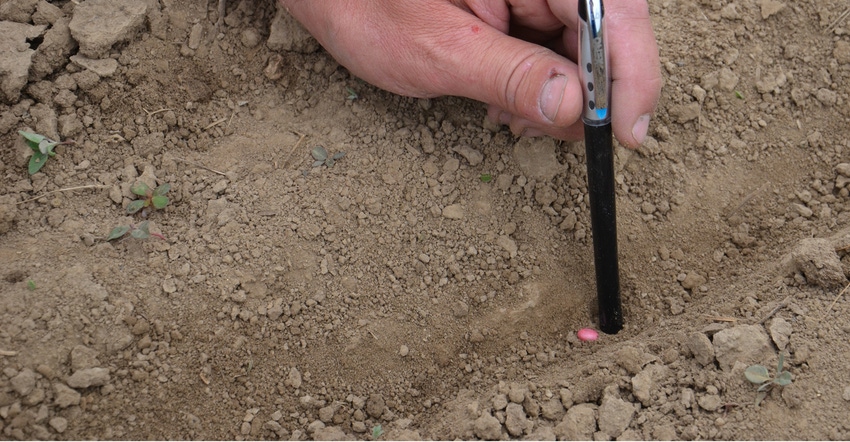
Finding seeds in the trench to check on planter performance is almost as much of an art as finding mushrooms in the woods. And sometimes the seeds seem just as elusive as the morels.
How can you simplify the process of digging for seed to see how well everything is working? Believe it or not, Schaffert Manufacturing actually offers a product that makes this task easier. The tool, made of plastic, consists of a strip with a pointed end, and spokespeople say you can dig to locate seed without getting your hands dirty or exposing them to chemicals that might have been applied with the seed.
It's called the Dig-It. Learn more at schaffert.com. Look under "Products."
Two sizes are available. The short version is 6.75 inches long, and the large one measures 8.5 inches long. The small ones sell for 75 cents each, and the long ones for $1 each. Inquire about minimum orders and shipping information.
Why would you want to use this product in the first place? Here are four reasons why it might be worth taking time to check seed placement before you plant an entire field.
1. Enjoy peace of mind. If you’ve got a monitor that tells you population, singulation and whether each planter row is working, you may not think you need to dig. But experience says it’s a good way to validate what the monitor is showing. It’s a form of ground-truthing, only you are ground-truthing a monitor, not a visual image taken from the sky in a growing crop field.
2. Determine seed depth. Monitors don’t tell you if every seed is being placed at the proper depth, at least not yet. You may want to dig enough seeds within a row to determine if they are ending up at the desired depth. That may vary depending upon conditions. Indiana Prairie Farmer and Throckmorton Agricultural Center trials conducted over three years indicated you could go as deep as 4 inches on corn seeding depth without seeing a difference in stand or yield. The only significant difference in those trials was in a year when corn was placed shallow, at approximately 1 inch. That placement yielded 20 bushels per acre less.
3. Compare spacing and depth row to row. Pete Illingworth has found occasions where seed was going deeper in one row than another, even though the depth settings on the row units were the same. He is a mechanic and in charge of planting at the Throckmorton research center, part of the Purdue University farms system. If he finds differences, he attempts to figure out why or if the depth setting on one or more rows needs to be adjusted.
4. Check if seeds are reaching moisture. The only way to know if seeds are being placed in moist, uniform conditions consistently at this point is to dig up enough seeds until you’re satisfied they are. In fields with varying soil types, this may require seed placement checks at more than one location.
About the Author(s)
You May Also Like




